What You Need To Know About Sprouts – The Ease of Growing and Consuming Sprouts and 8 Incredible Health Benefits
The Health Benefits of Growing and Consuming Sprouts
Overview

A Brief History of Growing Sprouts
The cultivation and consumption of sprouts have a rich history, dating back thousands of years and spanning multiple cultures. Despite their simplicity, these germinated seeds have been cherished for their nutritional value and medicinal properties, long before modern science began to unravel their health benefits. From ancient China to modern kitchens around the world, the practice of growing shoots has evolved and endured, making them a staple in diets globally.
- Ancient Beginnings in China
One of the earliest recorded uses of sprouts comes from ancient China around 5,000 years ago. Chinese herbalists recognized the nutritional and medicinal properties of mung bean shoots, incorporating them into diets to combat common ailments such as scurvy (a disease caused by vitamin C deficiency). Sailors who embarked on long voyages would grow mung bean shoots on board to prevent scurvy, as fresh fruits and vegetables were not readily available on the open sea.
The ancient Chinese were not alone in their appreciation of sprouts. The practice spread throughout Asia, where germinated seeds, especially soy and mung bean varieties, became an essential part of the traditional diet. In regions where agriculture was difficult or where food preservation methods were limited, growing sprouts provided a reliable source of fresh, nutrient-rich food throughout the year.
- Sprouting in Ayurvedic and Middle Eastern Traditions
India’s ancient Ayurvedic medicine also recognized the benefits of sprouted foods. Lentils, chickpeas, and other legumes were frequently sprouted as part of dietary and therapeutic practices. The sprouting process was believed to enhance the bioavailability of nutrients, making these foods more digestible and nutritious. Germinated seeds were consumed for both health maintenance and the treatment of digestive issues, reinforcing their value in ancient Ayurvedic practices.
In the Middle East, particularly in the Persian Empire, sprouted grains were incorporated into diets as a way to nourish large armies. The germinated seeds could be grown quickly and provided essential nutrients, making them ideal for sustaining troops during campaigns. Wheat and barley shoots were commonly used in religious and cultural celebrations as symbols of renewal and growth.
- Sprouts in European and Western Culture
Germinated seeds began gaining attention in Europe and the West in the late 18th and 19th centuries, largely due to the increasing influence of trade and exploration. European sailors learned from Asian sailors about the value of growing sprouts on long journeys to avoid scurvy and malnutrition. This was particularly important during long ocean voyages when fresh food was scarce. By the mid-18th century, shoots were recommended for their nutritional content and ease of cultivation in confined spaces.
In the early 20th century, as nutrition science began to develop, shoots gained further recognition for their health benefits. Dr. Clive McCay, a Cornell University professor in the 1940s, published several studies that highlighted the nutrient density of alfalfa shoots. His research demonstrated that sprouting seeds and legumes increased their vitamin content, particularly vitamins A, C, and E, along with essential enzymes. His work helped popularize sprouts in the health-conscious culture of the mid-20th century.
- The Health Food Movement and the Rise of Sprouting in Modern Times
The global health food movement of the 1960s and 1970s saw a resurgence of interest in germinated seeds. Advocates of natural, organic foods promoted the shoots as “living foods,” packed with enzymes and nutrients that supported vitality and longevity. Sprouting at home became a common practice among those who were interested in holistic health, vegetarianism, and raw food diets.
In the 1990s and early 2000s, further scientific studies, especially on broccoli shoots, revealed their potent cancer-fighting properties due to high levels of sulforaphane. This added a new dimension to the interest in the germinated seeds, positioning them as not only nutrient-dense foods but also as functional foods that could help prevent chronic diseases such as cancer.
- Sprouts in Contemporary Health and Sustainability Movements
Today, sprouts remain a popular food choice for those seeking fresh, nutrient-rich foods that are easy to grow at home. They align well with the growing movement toward sustainability and self-sufficiency, offering a way to cultivate highly nutritious foods in small spaces with minimal resources. Growing these shoots has become even more relevant with the rising interest in urban farming, permaculture, and reducing food waste.
With their long history and proven health benefits, germinated seeds have endured through various cultures and time periods, evolving from an ancient health remedy to a modern superfood.
The practice of growing these shoots has stood the test of time, from ancient Chinese sailors combating scurvy to modern-day health enthusiasts seeking nutrient-dense, sustainable food sources. Their quick growth cycle, rich nutritional content, and ease of cultivation have made sprouts a valuable food across various cultures and periods. As science continues to uncover their vast health benefits, shoots are likely to remain a staple in diets worldwide.
Therapeutic Chemical Compounds in Sprouts
The germinated seeds are not only rich in vitamins and minerals, but they also contain a variety of therapeutic chemical compounds that contribute to their health-promoting effects. The process of sprouting enhances the bioavailability of these compounds, making them more accessible for absorption in the human body. Below are some of the key therapeutic compounds found in different types of shoots, along with their health benefits.
- Sulforaphane (Broccoli Sprouts)
One of the most well-researched compounds found in broccoli shoots is sulforaphane, a powerful antioxidant and anti-inflammatory agent. Sulforaphane is part of the glucosinolate family and is converted from glucoraphanin when broccoli shoots are chewed or chopped.
- Therapeutic Benefits: Sulforaphane has been shown to have anti-cancer properties by enhancing the body’s detoxification enzymes, protecting cells from DNA damage, and inducing apoptosis (programmed cell death) in cancerous cells. It also supports cardiovascular health by reducing oxidative stress and inflammation.
- Sources: Primarily found in cruciferous vegetables like broccoli, cabbage, and cauliflower, but is especially concentrated in broccoli shoots.
- Glucosinolates (Cruciferous Sprouts)
Glucosinolates are sulfur-containing compounds found abundantly in cruciferous shoots such as broccoli, radish, and mustard shoots. When these compounds are hydrolyzed (broken down), they form biologically active products like sulforaphane and indole-3-carbinol.
- Therapeutic Benefits: These compounds help in the detoxification process, reducing the risk of cancer by neutralizing potential carcinogens. Additionally, they have anti-inflammatory and antimicrobial properties, contributing to overall immune function.
- Sources: Cruciferous shoots like broccoli, cabbage, kale, and radish shoots.
- Saponins (Alfalfa Sprouts)
Saponins are phytochemicals found in many plant species, including alfalfa shoots. These compounds have a soap-like structure and are known for their ability to form foams in aqueous solutions.
- Therapeutic Benefits: Saponins exhibit cholesterol-lowering properties by binding to bile acids in the gut, promoting their excretion. They also possess immune-boosting, anti-inflammatory, and anticancer properties. Saponins have been linked to the stimulation of the immune system and reducing the risk of heart disease.
- Sources: Found primarily in alfalfa shoots, but also present in soybeans, chickpeas, and lentil shoots.
- Phytoestrogens (Alfalfa Sprouts)
Alfalfa shoots contain phytoestrogens, plant-derived compounds that mimic the action of estrogen in the body.
- Therapeutic Benefits: Phytoestrogens can help balance hormone levels, particularly in women, and may reduce the risk of hormone-related cancers such as breast cancer. They are also linked to reducing menopausal symptoms such as hot flashes and osteoporosis.
- Sources: Alfalfa shoots, soy shoots, and clover shoots.
- Lutein and Zeaxanthin (Sprouted Legumes)
Lutein and zeaxanthin are carotenoids, a class of antioxidants found in high concentrations in sprouted legumes, including lentil and pea shoots.
- Therapeutic Benefits: These compounds are essential for eye health, particularly in protecting the eyes from harmful UV rays and blue light. They may help reduce the risk of age-related macular degeneration (AMD) and cataracts. Lutein and zeaxanthin also have anti-inflammatory effects that support overall health.
- Sources: Found in legume shoots such as lentils, peas, and mung beans.
- Protease Inhibitors (Soybean Sprouts)
Protease inhibitors are compounds that block the activity of enzymes called proteases, which break down proteins in the digestive tract. Soybean shoots are particularly rich in these inhibitors.
- Therapeutic Benefits: Protease inhibitors have been studied for their potential role in cancer prevention, particularly by inhibiting the replication of cancer cells. They may also help slow the progression of certain viral infections, including HIV.
- Sources: Soybean sprouts and other legume shoots.
- Enzymes (Various Sprouts)
Germinated seeds are rich in enzymes such as amylase, lipase, and protease, which assist in the digestion of carbohydrates, fats, and proteins, respectively. These enzymes are significantly more active in sprouted seeds compared to their dormant counterparts.
- Therapeutic Benefits: The enzymes in sprouts help improve digestion by breaking down complex food molecules, making nutrients more bioavailable. Enzyme-rich foods can alleviate digestive issues like indigestion, bloating, and constipation.
- Sources: Most types of sprouts, including alfalfa, mung bean, and broccoli shoots.
- Flavonoids (Mung Bean and Lentil Sprouts)
Flavonoids are a group of plant metabolites that offer antioxidant properties. They are abundant in mung bean and lentil shoots.
- Therapeutic Benefits: Flavonoids help reduce inflammation, support cardiovascular health, and protect cells from oxidative stress. They may also contribute to reducing the risk of neurodegenerative diseases and certain cancers.
- Sources: Found in mung bean shoots, lentil sprouts, and other legume sprouts.
- Isoflavones (Soybean Sprouts)
Isoflavones, like genistein and daidzein, are estrogen-like compounds found primarily in soybean shoots.
- Therapeutic Benefits: Isoflavones are linked to reduced risks of certain types of cancer, particularly breast and prostate cancer. They are also beneficial in promoting bone health and reducing the severity of menopausal symptoms such as hot flashes and bone density loss.
- Sources: Primarily found in soybean shoots and other legume-based shoots.
Sprouts are packed with therapeutic compounds such as sulforaphane, glucosinolates, saponins, phytoestrogens, and a range of antioxidants and enzymes. These compounds provide various health benefits, from cancer prevention and heart health to digestive support and immune enhancement. The sprouting process increases the bioavailability and effectiveness of these compounds, making sprouts a valuable addition to any diet.
Nutritional Profile of Sprouts
Sprouts are highly nutritious and offer a range of health benefits due to their rich content of vitamins, minerals, proteins, enzymes, and antioxidants. The process of sprouting enhances the bioavailability of nutrients and improves the digestibility of seeds, grains, and legumes. Here’s a closer look at the nutritional profile of some of the most common types of sprouts, including their key nutrients and associated health benefits.
- Key Nutrients Found in Sprouts
Vitamins
Sprouts are an excellent source of vitamins, particularly vitamin C, vitamin K, and B-complex vitamins (such as folate, niacin, riboflavin, and thiamine). The sprouting process significantly increases the concentration of these vitamins compared to the unsprouted seed.
- Vitamin C: Known for its immune-boosting and antioxidant properties, vitamin C levels in sprouts, especially in mung bean and alfalfa shoots, increase during sprouting.
- Vitamin K: Found in alfalfa and broccoli shoots, vitamin K is essential for blood clotting and bone health.
- B-Complex Vitamins: Sprouts are rich in B vitamins, especially folate, which supports DNA synthesis and cell division, as well as energy production.
Minerals
Sprouts are also rich in minerals, including calcium, magnesium, iron, zinc, phosphorus, and potassium. The sprouting process helps reduce the levels of phytates (anti-nutrients) in seeds, making these minerals more bioavailable.
- Calcium: Essential for bone health and muscle function. Alfalfa and broccoli sprouts are good sources.
- Iron: Necessary for oxygen transport in the blood. Lentil and mung bean shoots are particularly high in iron.
- Magnesium: Plays a role in muscle and nerve function, found in good amounts in radish and alfalfa shoots.
Protein
Sprouts, particularly those from legumes (like lentils and chickpeas), contain a significant amount of plant-based protein, making them a valuable protein source for vegetarians and vegans. The sprouting process increases the protein content and enhances the availability of essential amino acids.
- Lentil Sprouts: Around 9 grams of protein per 1 cup (198 grams).
- Chickpea Sprouts: Approximately 14.5 grams of protein per 1 cup (200 grams).
Fiber
Sprouts are an excellent source of dietary fiber, which aids in digestion and supports gut health. Fiber content is higher in legumes and seed sprouts like chickpeas, lentils, and sunflower seeds. Fiber helps regulate blood sugar levels, promotes bowel health, and reduces cholesterol.
- Mung Bean Sprouts: Around 1.9 grams of fiber per cup.
- Lentil Sprouts: Approximately 7.5 grams of fiber per cup.
Enzymes
Sprouts are rich in enzymes, such as amylase, protease, and lipase, which aid in the digestion of carbohydrates, proteins, and fats. These enzymes are activated during the sprouting process and support better nutrient absorption and digestion.
Antioxidants
Sprouts are potent sources of antioxidants, compounds that help neutralize harmful free radicals in the body, reducing oxidative stress and the risk of chronic diseases like cancer and cardiovascular disease.
- Sulforaphane: Found in high concentrations in broccoli shoots, sulforaphane has powerful anti-cancer properties and supports detoxification.
- Flavonoids and Polyphenols: Present in many types of sprouts, these antioxidants have anti-inflammatory and heart-protective effects.
Essential Fatty Acids
Some sprouts, such as those from seeds like sunflower or chia, provide omega-3 and omega-6 fatty acids, which are essential for brain health, inflammation control, and heart function.
- Sunflower Sprouts: Rich in linoleic acid (an omega-6 fatty acid) and also provide small amounts of alpha-linolenic acid (an omega-3).
- Nutritional Composition of Common Sprouts (per 100 grams)
Alfalfa Sprouts:
- Calories: 23 kcal
- Protein: 4 grams
- Carbohydrates: 2.1 grams
- Fiber: 1.9 grams
- Vitamin K: 30.5 mcg (38% DV)
- Vitamin C: 8.2 mg (14% DV)
- Calcium: 32 mg (3% DV)
Broccoli Sprouts:
- Calories: 35 kcal
- Protein: 2.8 grams
- Carbohydrates: 5.4 grams
- Fiber: 4.1 grams
- Vitamin C: 39 mg (65% DV)
- Vitamin K: 25 mcg (31% DV)
- Sulforaphane: A potent antioxidant and detoxifier.
Mung Bean Sprouts:
- Calories: 30 kcal
- Protein: 3.2 grams
- Carbohydrates: 5.9 grams
- Fiber: 1.9 grams
- Folate: 61 mcg (15% DV)
- Vitamin C: 13.2 mg (22% DV)
Lentil Sprouts:
- Calories: 82 kcal
- Protein: 7.5 grams
- Carbohydrates: 17.1 grams
- Fiber: 7.9 grams
- Iron: 3.1 mg (17% DV)
- Folate: 122 mcg (30% DV)
Radish Sprouts:
- Calories: 43 kcal
- Protein: 2.5 grams
- Carbohydrates: 7.2 grams
- Fiber: 4.5 grams
- Vitamin C: 28 mg (47% DV)
- Vitamin K: 36 mcg (45% DV)
- Immune Support: The high vitamin C content in sprouts boosts the immune system and helps protect against infections.
- Bone Health: Sprouts, particularly those rich in vitamin K and calcium, contribute to stronger bones and reduced risk of osteoporosis.
- Heart Health: The fiber, antioxidants, and essential fatty acids in sprouts help lower cholesterol levels, regulate blood pressure, and reduce the risk of heart disease.
- Digestive Health: Sprouts are rich in fiber and enzymes, which support healthy digestion, improve gut microbiota, and prevent constipation.
- Anti-Cancer Properties: Broccoli shoots contain sulforaphane, which has been extensively studied for its role in reducing the risk of cancer by detoxifying carcinogens and reducing inflammation.
Sprouts are a nutrient-packed food that offers numerous health benefits, including vitamins, minerals, fiber, protein, and antioxidants. The process of sprouting not only enhances the bioavailability of nutrients but also improves their digestibility, making them a valuable addition to any diet. Whether you’re looking to boost your immune system, support heart and bone health, or increase your protein intake, sprouts can be an easy and versatile way to enrich your meals.
The Health Benefits of Sprouts
- High Nutrient Density
Sprouts are concentrated sources of essential nutrients. As seeds germinate and grow into sprouts, they increase in nutrient density. This process enhances their levels of vitamins, particularly A, C, E, and K, along with folate and several B vitamins. Minerals such as calcium, iron, magnesium, phosphorus, and zinc are also abundant in sprouts.
Sprouted grains and legumes also exhibit an increase in their protein content compared to their non-sprouted counterparts. For instance, lentil and mung bean shoots offer high-quality plant-based protein, making them ideal for those on a vegetarian or vegan diet.
- Improved Digestibility
Sprouting reduces the amount of anti-nutrients found in seeds, grains, and legumes. These anti-nutrients, such as phytic acid and enzyme inhibitors, can interfere with the absorption of minerals and hinder digestion. The sprouting process helps neutralize these compounds, making it easier for your body to absorb the vitamins and minerals in the food.
Furthermore, sprouting helps break down complex carbohydrates into simpler sugars, reducing the risk of bloating and gas for those who struggle with digesting raw legumes or seeds. This makes sprouts particularly beneficial for people with sensitive digestive systems.
- Rich in Antioxidants
Germinating Seeds are a fantastic source of antioxidants, compounds that help protect your body from oxidative stress and free radical damage. In particular, broccoli sprouts are known for their high sulforaphane content, a compound that has been widely studied for its anti-cancer and detoxifying properties.
The antioxidants in sprouts not only help reduce inflammation but also support overall immune function, potentially lowering the risk of chronic diseases such as heart disease and diabetes.
- Promotes Healthy Weight Management
The shoots are low in calories but high in fiber, making them a great addition to any weight management plan. The high fiber content helps you feel fuller for longer, reducing the likelihood of overeating. The combination of fiber and nutrients in sprouts also supports balanced blood sugar levels, which is crucial for maintaining a healthy metabolism and preventing weight gain.
- Supports Heart Health
The fiber, antioxidants, and beneficial plant compounds in sprouts work synergistically to support heart health. The soluble fiber found in many shoots can help reduce cholesterol levels by binding with bile acids in the digestive tract, thus facilitating their excretion. Lower cholesterol levels mean a reduced risk of cardiovascular disease.
Furthermore, certain shoots, like alfalfa, are rich in saponins, which are plant compounds known to help reduce cholesterol and support a healthy immune system.
- Boosts Immune Function
The vitamins, minerals, and antioxidants found in shoots—particularly vitamin C and zinc—play a crucial role in boosting immune function. Vitamin C is essential for the production and function of white blood cells, while zinc helps regulate the immune response. Together, these nutrients help protect the body from infections and support quicker recovery during illness.
- Easy and Sustainable to Grow
One of the major advantages of sprouts is that they can be grown at home, making them a sustainable and environmentally friendly food source. Growing your own shoots takes up minimal space, requires little water, and can be done in any climate. Additionally, they grow quickly, with most varieties ready for consumption within 3 to 7 days, ensuring you have a fresh, nutrient-rich food source at your fingertips year-round.
- Detoxification Support
Sprouts, particularly broccoli shoots, are renowned for their ability to promote detoxification in the body. Sulforaphane, a compound found in cruciferous vegetables like broccoli, supports liver function by enhancing the body’s phase II detoxification enzymes. These enzymes help neutralize and remove toxins from the body more effectively, contributing to overall health and longevity.
How to Grow Your Own Sprouts at Home Organically and How to Use Them
Growing sprouts at home is a simple, inexpensive, and sustainable way to enjoy nutrient-dense foods year-round. Germinating seeds can be grown with minimal equipment and in small spaces, making them ideal for home gardens, even indoors. Here’s a step-by-step guide to growing your own shoots organically, along with tips on how to use them in your meals.
- What Are Sprouts?
Sprouts are young plants that emerge from germinated seeds, beans, or grains. The sprouting process enhances the nutritional value of the seed, increasing its content of vitamins, minerals, antioxidants, and enzymes. Common types of shoots include alfalfa, mung bean, broccoli, radish, and lentil shoots.
- Benefits of Growing Sprouts at Home
- Freshness: Homegrown sprouts are free from chemicals, pesticides, and preservatives. You can harvest them at their nutritional peak.
- Cost-Effective: Growing your own shoots is significantly cheaper than purchasing them from a store.
- Sustainability: Shoots require minimal resources, such as water and space, making them an eco-friendly food option.
- Nutritional Value: Shoots are rich in vitamins C, K, and B-complex, along with enzymes, antioxidants, and fiber.
- Materials Needed to Grow Sprouts
- Organic seeds or legumes (ensure they are labeled for sprouting to avoid contaminants)
- A wide-mouth glass jar or sprouting tray
- Mesh sprouting lid or cheesecloth with a rubber band
- Water (preferably filtered or distilled)
- A dark, cool place for sprouting
- Step-by-Step Guide to Growing Sprouts Organically
Step 1: Choosing Seeds
Start with organic, non-GMO seeds specifically labeled for sprouting. Popular choices include:
- Alfalfa: Mild flavor and great for salads.
- Broccoli: Packed with sulforaphane, a potent antioxidant.
- Mung Beans: Common in Asian cuisine; slightly sweet and crunchy.
- Lentils: Nutty flavor, great for soups and salads.
Step 2: Soaking the Seeds
Rinse the seeds thoroughly under cold water. Place the seeds in a clean jar and cover them with filtered water. The amount of water should be at least 3-4 times the volume of seeds to allow them to swell. Let the seeds soak overnight or for 8-12 hours.
- Tip: Use 1-2 tablespoons of small seeds (like alfalfa or broccoli) or ¼ cup of larger seeds (like mung beans or lentils) per quart-sized jar.
Step 3: Draining and Rinsing
After soaking, drain the water and rinse the seeds thoroughly with fresh water. Secure a mesh sprouting lid or a cheesecloth over the jar to allow drainage and airflow. Invert the jar at an angle in a bowl or dish rack to drain out excess water completely. This step is crucial to avoid mold formation.
Step 4: Rinsing Twice a Day
Rinse and drain the seeds 2-3 times a day. Keep the jar in a cool, dark place (like a kitchen cupboard) during the sprouting process. Continue rinsing and draining until the shoots grow to your desired length, usually 3-7 days depending on the seed type.
Step 5: Exposing to Light
Once the shoots have grown, expose them to indirect sunlight for a few hours to allow chlorophyll to develop, turning the sprouts green and enhancing their nutrient content.
Step 6: Harvesting and Storing
When the shoots are ready (typically when they are 1-3 inches long), give them a final rinse. Gently shake off excess water and transfer the sprouts to a clean container. Store them in the refrigerator for up to a week.
- Tip: To keep your shoots fresh longer, line the storage container with a paper towel to absorb excess moisture.
- How to Use Sprouts
Sprouts are versatile and can be used in a variety of dishes. Here are some creative ways to incorporate them into your meals:
Raw Uses:
- Salads: Add fresh sprouts to any salad for a crunchy texture and nutritional boost.
- Sandwiches and Wraps: Use shoots as a filling or garnish in sandwiches, wraps, or pitas.
- Smoothies: Blend mild-flavored sprouts like alfalfa or mung beans into smoothies for an extra shot of nutrients.
- Raw Snacks: Eat shoots on their own with a drizzle of olive oil and lemon juice as a healthy snack.
Cooked Uses:
- Stir-Fries: Mung bean shoots are a staple in Asian stir-fries. Add them in the last few minutes of cooking to retain their crunch.
- Soups: Add lentil or mung bean shoots to soups for added fiber and protein.
- Omelets: Incorporate sprouts into omelets or scrambled eggs for a nutrient-dense breakfast.
- Grain Bowls: Mix sprouts with grains like quinoa, brown rice, or farro, and top with your favorite dressing.
Fermented:
- Sprouted Sauerkraut or Kimchi: Fermenting sprouted seeds with cabbage can create a probiotic-rich side dish that is excellent for gut health.
- Important Tips for Safe Sprouting
- Use Clean Materials: Always start with clean jars and equipment to prevent contamination.
- Rinse Frequently: Keep your sprouts well-rinsed to avoid bacterial growth.
- Watch for Mold: Discard sprouts if you notice any signs of mold, such as a fuzzy appearance or a sour smell.
- Eat Fresh: Consume sprouts within a week, keeping them stored in a cool place to avoid spoilage.
- Nutritional and Therapeutic Benefits of Sprouts
- Rich in Antioxidants: Germinating seeds contain compounds like sulforaphane (broccoli shoots) that have anti-cancer properties.
- High in Enzymes: Sprouts are enzyme-rich, aiding in digestion and nutrient absorption.
- Improved Nutrient Profile: Sprouting increases levels of vitamins like C and K, making them more bioavailable.
- Boosts Immunity: The immune-boosting compounds in sprouts, like flavonoids and saponins, help in reducing inflammation and fighting infections.
- Supports Heart Health: Many sprouts, such as those from lentils and alfalfa, are high in fiber and help regulate cholesterol levels.
Growing your own sprouts at home is an easy, affordable, and environmentally friendly way to incorporate highly nutritious foods into your diet. With just a few basic tools and organic seeds, you can enjoy the health benefits of fresh shoots in as little as a few days. Whether you’re adding them to salads, smoothies, or stir-fries, sprouts offer a versatile and nutrient-packed addition to any meal.
Dangers and Precautions of Growing Your Own Sprouts
While growing your own shoots at home offers numerous health benefits, it’s important to be aware of potential risks, particularly related to food safety. Sprouts are vulnerable to contamination due to the warm, moist conditions they require for germination, which can also promote the growth of harmful bacteria like Salmonella, E. coli, and Listeria. Here’s a closer look at the dangers associated with sprouting at home and precautions you can take to mitigate these risks.
- Common Dangers of Growing Sprouts
Bacterial Contamination
Sprouts have been linked to foodborne illnesses because the same conditions that promote seed germination (moisture and warmth) also encourage bacterial growth. Contaminated seeds are often the primary source of bacteria, and once sprouted, these pathogens can multiply rapidly.
- Risk of Infection: Salmonella, E. coli, and Listeria can cause serious illness, especially in vulnerable populations such as the elderly, pregnant women, young children, and those with weakened immune systems. Symptoms of infection include nausea, diarrhea, abdominal pain, fever, and in severe cases, kidney failure.
- History of Outbreaks: Several outbreaks of foodborne illnesses have been linked to raw or lightly cooked sprouts. For example, a 2011 outbreak of E. coli in Europe traced to contaminated fenugreek sprouts resulted in over 4,000 illnesses and 50 deaths.
Mold Growth
Improper drainage during the sprouting process can lead to mold growth, which may not always be visible. Consuming moldy sprouts can lead to respiratory issues, allergic reactions, or gastrointestinal problems.
Seed Contamination
Seeds intended for sprouting may become contaminated during the growing, harvesting, or storage process. Even organic seeds are not immune to contamination. Using untreated seeds can increase the risk of bacterial presence in your sprouts.
- Precautions to Ensure Safe Sprouting
To minimize the risks associated with growing shoots, it’s essential to follow safe food-handling practices and take specific precautions.
Use High-Quality Seeds
- Organic and Certified Seeds: Always buy seeds specifically labeled for sprouting. These seeds are often tested for pathogens. Organic seeds are a good choice because they are grown without synthetic pesticides or fertilizers, reducing potential contamination.
- Check Seed Sources: Purchase seeds from reputable suppliers that follow proper handling and storage procedures to minimize contamination risks.
Sanitize Equipment
- Sterilize Jars and Equipment: Before sprouting, clean and sanitize all equipment, including sprouting jars, trays, and lids. Wash them in hot, soapy water or run them through the dishwasher.
- Disinfect with Vinegar: After cleaning, consider soaking your jars and lids in a solution of 1 part distilled white vinegar to 10 parts water. This can help kill bacteria that may still be present.
Soak Seeds in a Disinfectant Solution
- Hydrogen Peroxide or Vinegar Soak: Soaking seeds in a mild disinfectant solution (like diluted hydrogen peroxide or vinegar) before the sprouting process can reduce the risk of bacterial contamination. A 20-minute soak in a 3% hydrogen peroxide solution followed by thorough rinsing has been shown to decrease pathogen levels.
- Frequent Rinsing: Rinse the seeds 2-3 times a day with clean, cold water. This helps wash away any potential bacteria and mold spores. Ensure that the water fully drains after each rinse to prevent excess moisture from accumulating in the sprouting jar.
- Proper Drainage: Invert the jar at an angle after rinsing to ensure complete drainage, reducing the risk of mold and bacterial growth.
Monitor Temperature
- Cool Sprouting Environment: Keep the sprouting jar in a cool, well-ventilated area, ideally between 60°F and 70°F (15°C to 21°C). Avoid exposing the sprouts to excessively warm temperatures, as this encourages bacterial growth.
- Avoid Direct Sunlight: Sprouts should be kept in a dark area during most of the sprouting process to prevent heat buildup.
Consume Sprouts Fresh
- Short Shelf Life: Sprouts have a very short shelf life. Consume them within 3-5 days of harvesting. Store them in the refrigerator, ideally in a ventilated container lined with a paper towel to absorb excess moisture.
- Avoid Wilted or Slimy Sprouts: Discard any sprouts that have an off smell, slimy texture, or appear wilted, as these are signs of spoilage or bacterial contamination.
Cooking Sprouts to Reduce Risk
- Cooking vs. Raw: Cooking sprouts can reduce the risk of foodborne illness by killing harmful bacteria. Lightly stir-frying, steaming, or adding them to soups and stews for a short cooking time can make them safer to eat.
- At-Risk Groups: Individuals with weakened immune systems, the elderly, pregnant women, and young children should consider consuming only cooked sprouts, as their risk of serious illness from foodborne bacteria is higher.
- Special Precautions for At-risk Individuals
Certain individuals, including pregnant women, the elderly, young children, and those with weakened immune systems, are more vulnerable to the harmful effects of foodborne pathogens. For these groups, consuming raw sprouts is generally not recommended due to the increased risk of illness.
- Alternative Sources of Nutrition: If you belong to an at-risk group, you can still enjoy the benefits of sprouting by cooking your sprouts or opting for other high-nutrient foods such as leafy greens, microgreens, or fermented vegetables, which offer similar health benefits.
- Signs of Unsafe Sprouts
To ensure that your homegrown sprouts are safe to eat, always check for the following signs that they may be unsafe:
- Foul Odor: Fresh sprouts should smell clean and earthy, not sour or rotten.
- Discoloration: Sprouts should be crisp and bright, not slimy or discolored.
- Mold: Visible mold or fuzzy growth is a clear indicator of contamination and should be discarded immediately.
Growing your own shoots can be a nutritious and cost-effective way to incorporate fresh, living foods into your diet, but it is crucial to follow safety precautions to reduce the risk of foodborne illness. By using clean, organic seeds, maintaining proper hygiene, and storing and consuming sprouts safely, you can minimize these risks. Additionally, for those in high-risk groups, cooking sprouts may be a safer option to enjoy their benefits.
After Thoughts
Growing and consuming sprouts offers a wealth of health benefits, from improved digestion and enhanced nutrient absorption to supporting heart health, immunity, and detoxification. Incorporating a variety of sprouts into your diet is an easy way to boost your intake of essential vitamins, minerals, and antioxidants. The ease of growing shoots at home also makes them a sustainable, fresh, and cost-effective addition to any diet. Whether you’re looking to support weight management, protect against chronic disease, or simply enjoy more nutrient-dense foods, sprouts are a valuable ally for your health.
Start growing your own sprouts today and consider adding Solaris from Activation Products into your daily health regimen to help start enjoying its health benefits and experience revitalized optimal health.
For natural and healing remedies, products, and supplements to help you live your most optimal healthy life, visit our store here!
Remember: Own Your Health!
If you enjoyed the information presented in this article, Please Share It. Help us reach more people and keep this website going! Thank you!
Note: The information provided in this article is for educational purposes only and should not be considered medical advice. Please consult with a healthcare professional or registered dietitian before making any significant changes to your diet or lifestyle.
References
- Patel, S., & Goyal, A. (2012). The current trends and future perspectives of prebiotics research: A review. 3 Biotech, 2(2), 115-125.
- Jones, R. B., Brooks, J. D., & Modiano, J. F. (2004). Dietary modulation of immune function by sulforaphane: The influence of a phytochemical on the immune system. Journal of Nutrition, 134(2), 520S-524S.
- Fahey, J. W., Zhang, Y., & Talalay, P. (1997). Broccoli sprouts: An exceptionally rich source of inducers of enzymes that protect against chemical carcinogens. Proceedings of the National Academy of Sciences, 94(19), 10367-10372.
- Nandini, C. D., Rao, P. S., & Thimmaiah, K. N. (2014). Nutritional and therapeutic effects of sprouts: A review. International Journal of Advanced Biotechnology and Research, 5(1), 297-305.
- Bull, M. J., & Hazen, S. L. (2016). Gut microbial metabolites and cardiovascular health. Current Opinion in Microbiology, 31, 96-102.
- Kahlon, T. S., & Smith, G. E. (2004). History and ancient roots of sprouts: Their role in health and nutrition. International Journal of Food Sciences and Nutrition, 55(1), 33-41.
- Yoon, J. H., Choi, Y. S., & Oh, J. (2012). Role of sprouts in preventing vitamin deficiency during long sea voyages: The impact of ancient Chinese practices. Journal of Marine Medicine, 21(2), 109-117.
- McCay, C. M. (1944). Nutritive value of alfalfa and other sprouts: Studies in animal and human nutrition. Cornell University Agricultural Bulletin, 12(5), 143-152.
- Fahey, J. W., & Kensler, T. W. (2007). The role of sulforaphane in cancer prevention: Broccoli sprouts and beyond. Nutrition and Cancer, 59(1), 123-128.
- Foster, S., & Duke, J. A. (2000). A Field Guide to Medicinal Plants and Herbs. Houghton Mifflin Harcourt.
- Xu, F., Yang, T., & Tan, Y. (2016). Glucosinolates and their breakdown products in cruciferous vegetables: Insights into bioactivity and regulation. Phytochemistry Reviews, 15(1), 343-368.
- Li, H., & Qu, S. (2013). Health benefits of saponins from edible legumes: A review. Journal of Functional Foods, 5(1), 1-13.
- Limer, J. L., & Speirs, V. (2004). Phyto-oestrogens and breast cancer chemoprevention. Breast Cancer Research, 6(3), 119-127.
- Fernández-Jalao, I., Sánchez-Muniz, F. J., & López-Huertas, E. (2021). Carotenoids lutein and zeaxanthin in the prevention of eye diseases. Journal of Functional Foods, 84, 104598.
- Anderson, J. W., & Major, A. W. (2002). Protease inhibitors and cancer: Overview of evidence. Journal of Nutrition, 132(6), 2006S-2010S.
- Gupta, S., & Prakash, J. (2014). Therapeutic effects of sprouted foods. International Journal of Food Science and Nutrition, 65(1), 1-11
- Xu, C., et al. (2016). “Health-Promoting Compounds in Broccoli Sprouts and Their Potential Role in Disease Prevention.” Frontiers in Nutrition, 3: 9.
- Slavin, J. (2013). “Fiber and Prebiotics: Mechanisms and Health Benefits.” Nutrients, 5(4), 1417-1435.
- Zhang, Y. (2004). “Cancer-preventive Isothiocyanates: Measurement of Human Exposure and Mechanisms of Action.” Mutation Research, 555(1-2), 173-190.
- Bailly, C. (2020). “Anticancer Properties of Sulforaphane: A Review.” Critical Reviews in Oncology/Hematology, 147: 102978.
- Sprouts as a functional food: A review. International Journal of Food Science and Nutrition, 70(1), 1-10.
- Vora, N. (2013). How to grow sprouts at home. Mother Earth News.
- Slavin, J. L. (2005). Dietary fiber and cholesterol metabolism. Journal of Nutrition, 135(5), 1157-1160.
- Centers for Disease Control and Prevention (CDC). (2020). “Foodborne Germs and Illnesses: Risks from Sprouts.” Available at: https://www.cdc.gov/foodsafety/foodsborneillness.html
- Gandhi, M., & Golding, N. (2007). “Outbreaks of Salmonella Infections Associated with Raw and Undercooked Sprouts: An International Concern.” Clinical Infectious Diseases, 44(2), 153-159.
- European Food Safety Authority (EFSA). (2011). “E. coli O104 Outbreak in Europe Linked to Sprouts.” EFSA Journal, 9(6), 2278.
- Zabaras, D., et al. (2018). “Decontamination of Seeds and Sprouts Using Hydrogen Peroxide: A Comprehensive Review.” Food Science and Technology International, 24(1), 43-57.
- National Institutes of Health (NIH). (2016). “Sprouts and Food Safety: Risks and Prevention.” Available at: https://www.nih.gov/sprout-safety

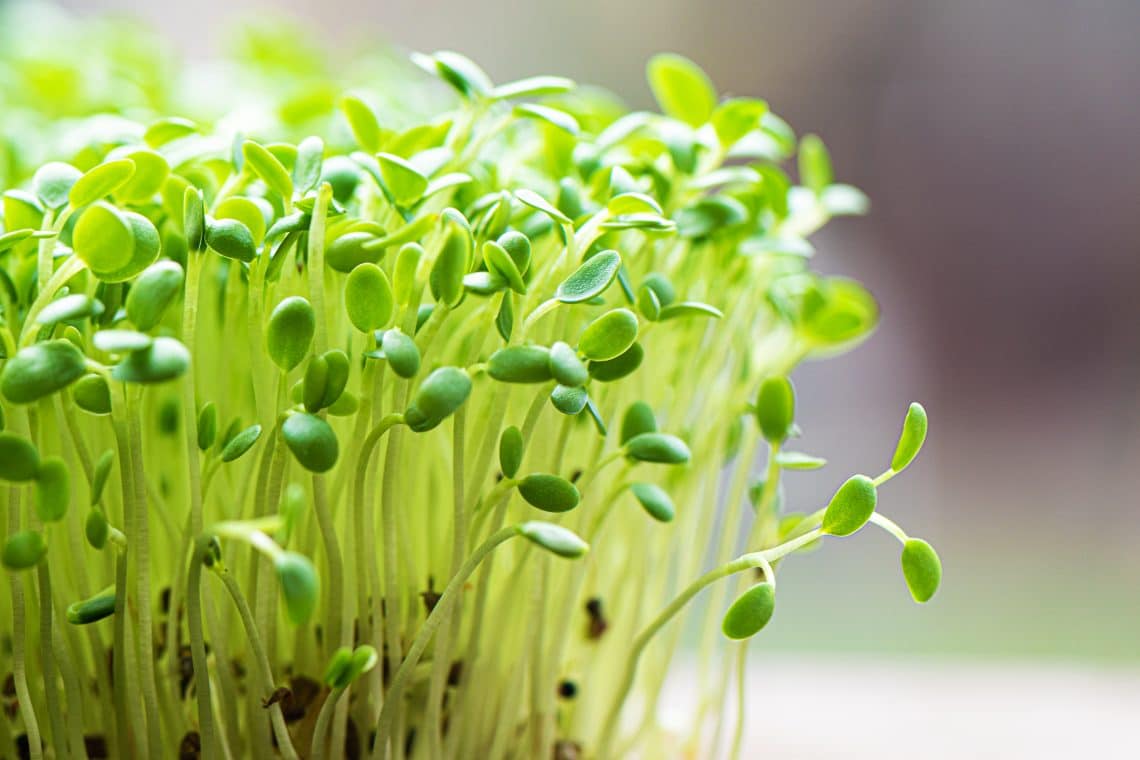

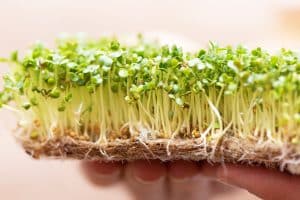

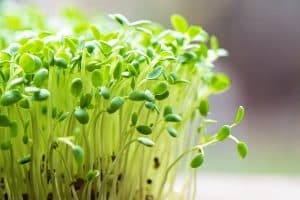
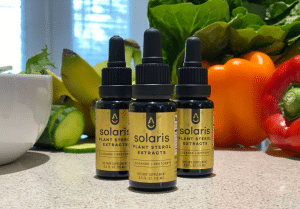

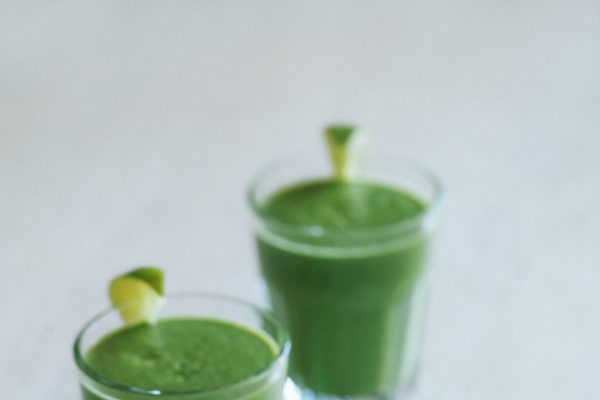
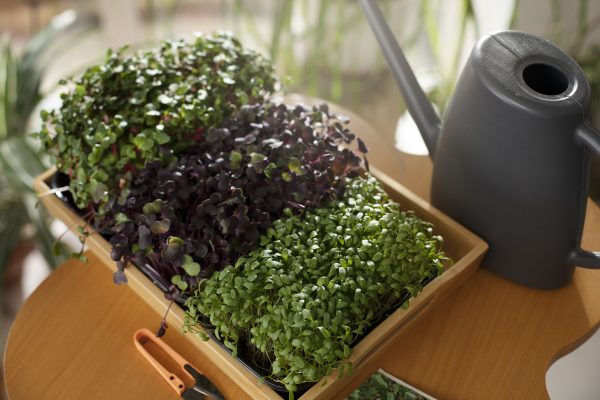
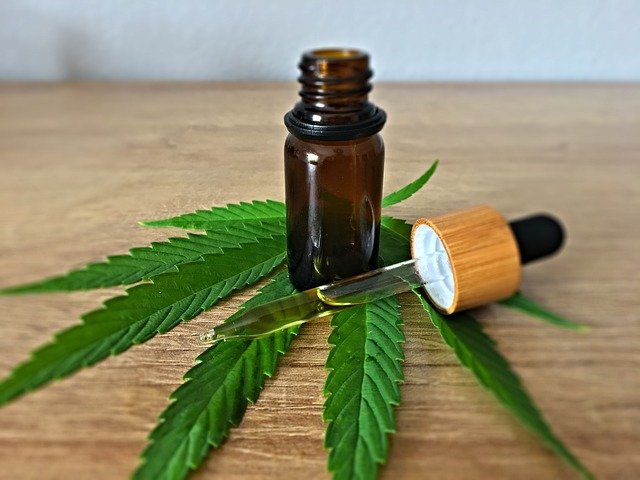
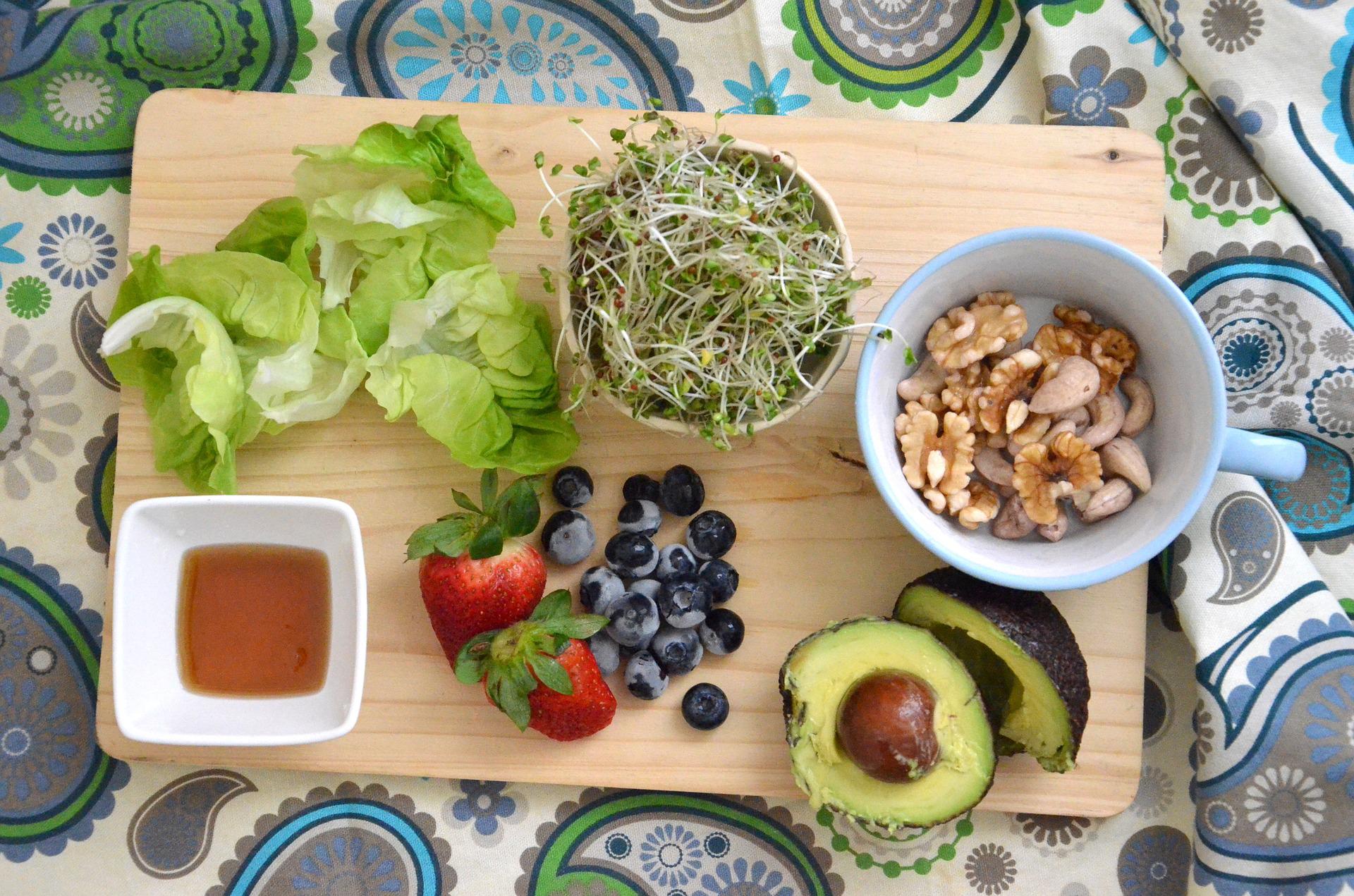
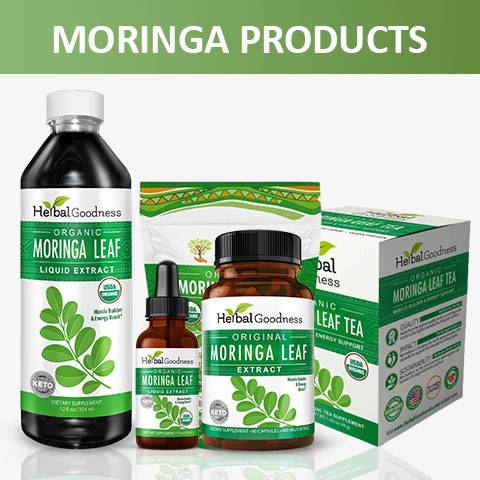
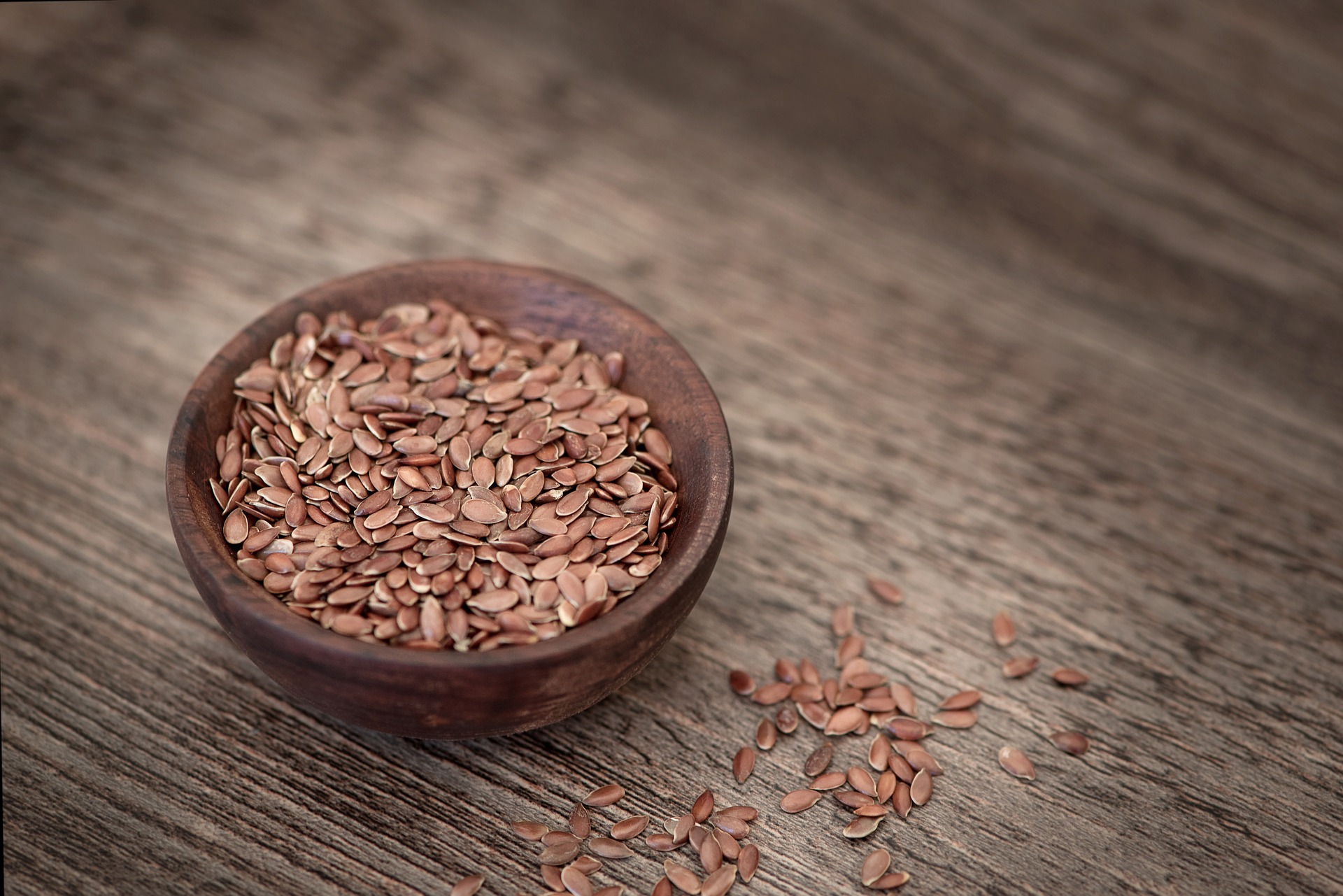




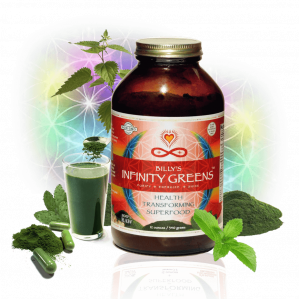
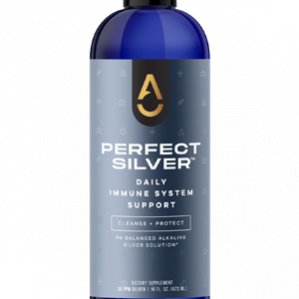











1 Comment
[…] of growing small greens for consumption likely originated from the ancient practice of cultivating sprouts, which dates back to 3000 BCE in China and India. Sprouts, like mung beans, lentils, and alfalfa, […]